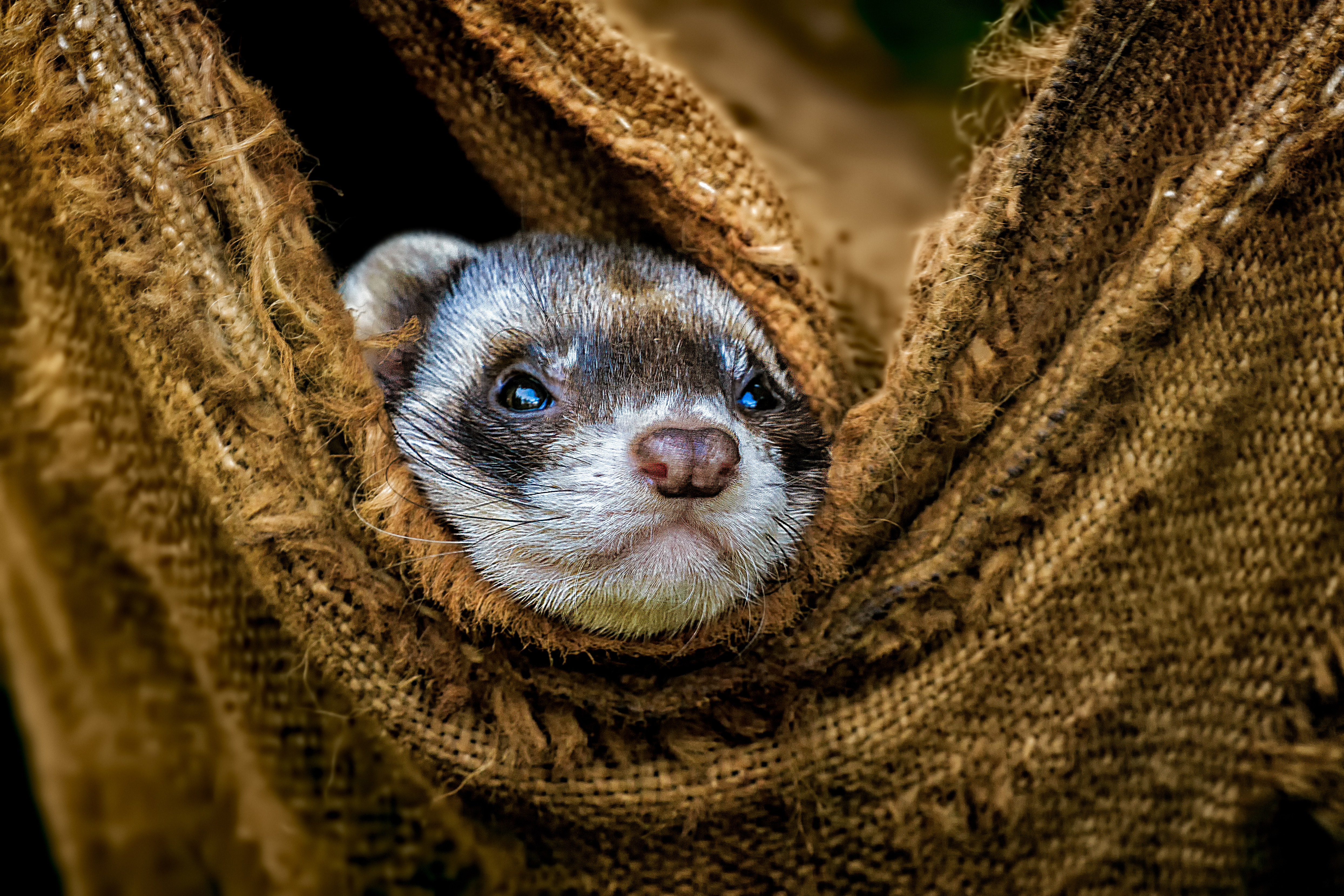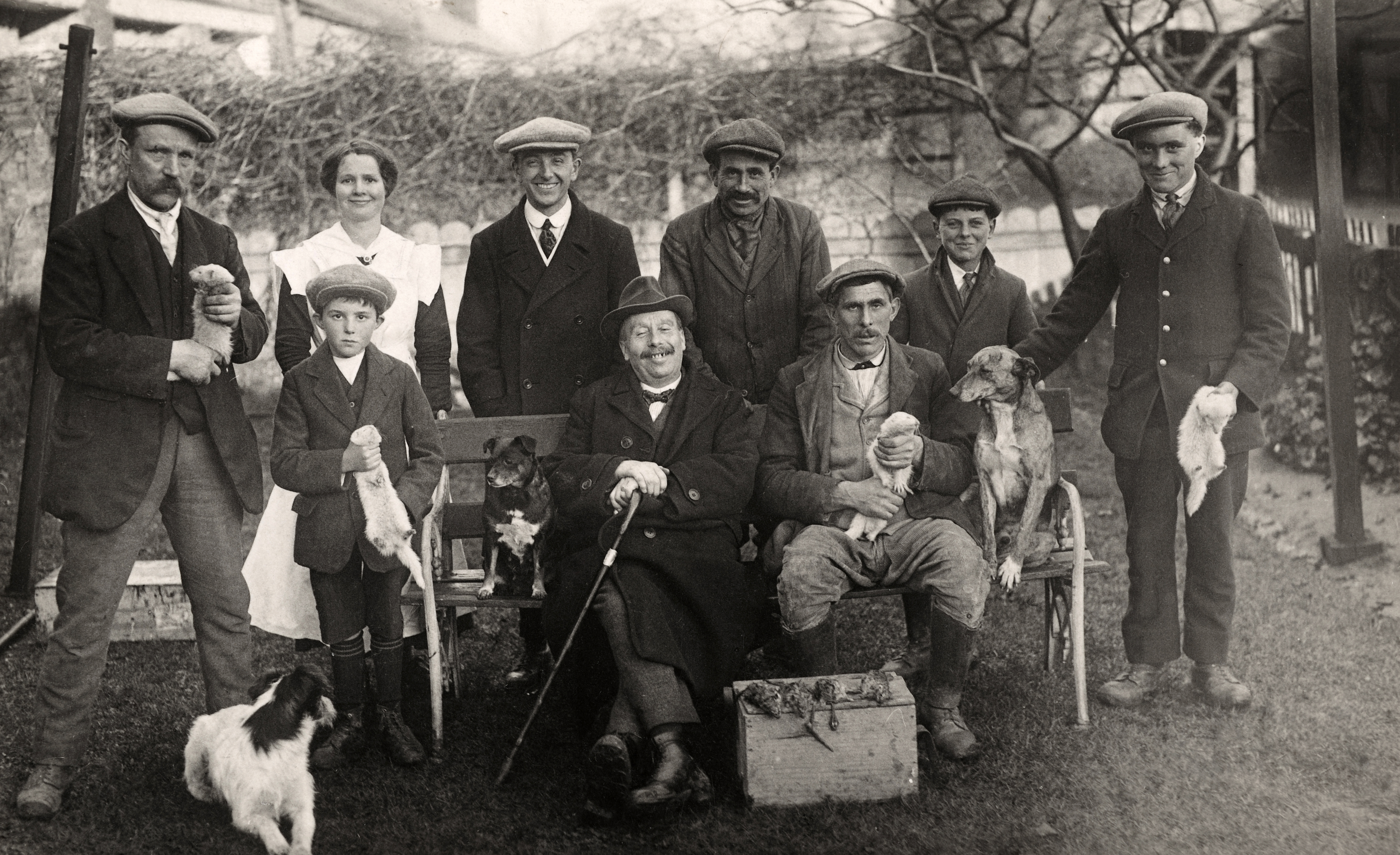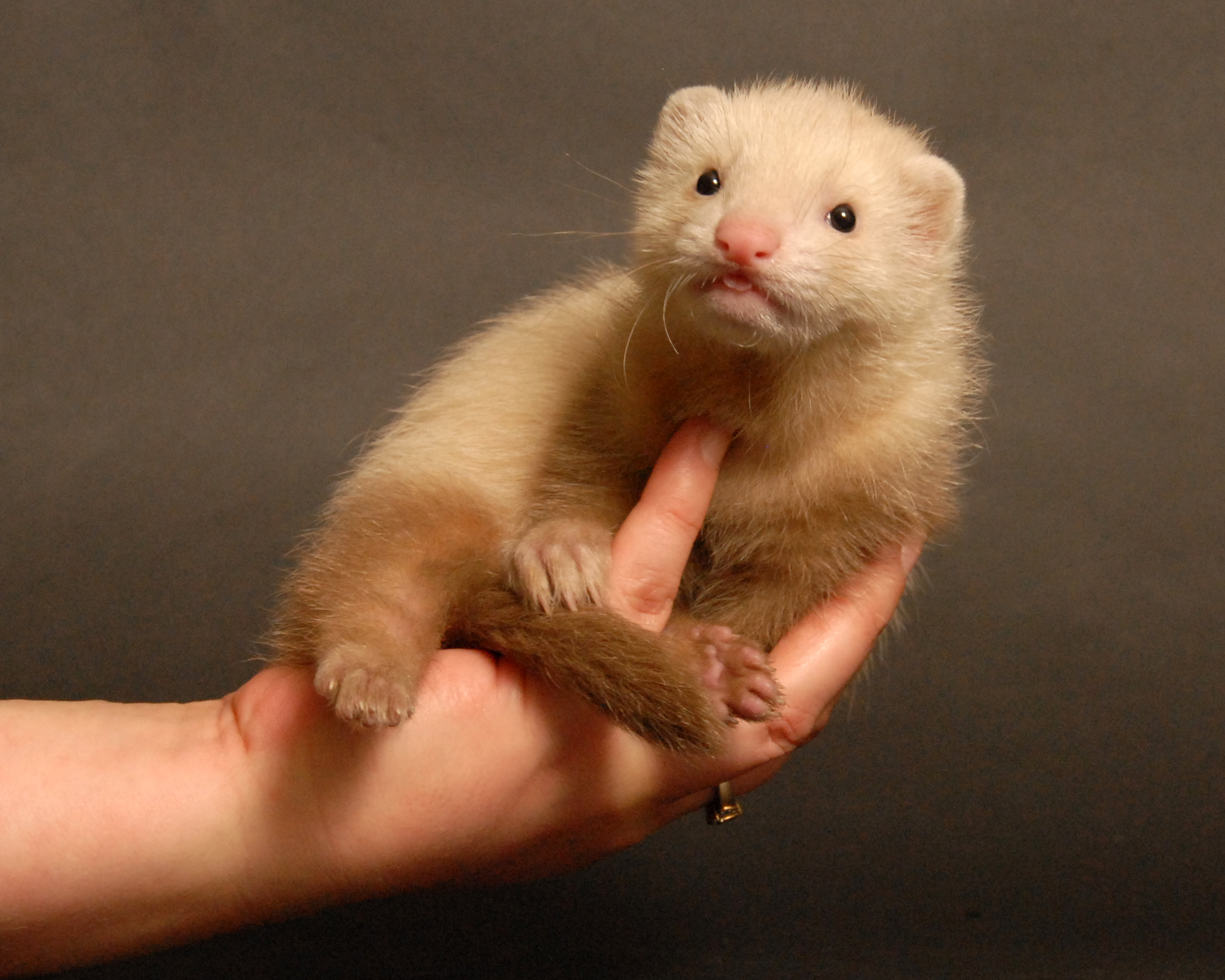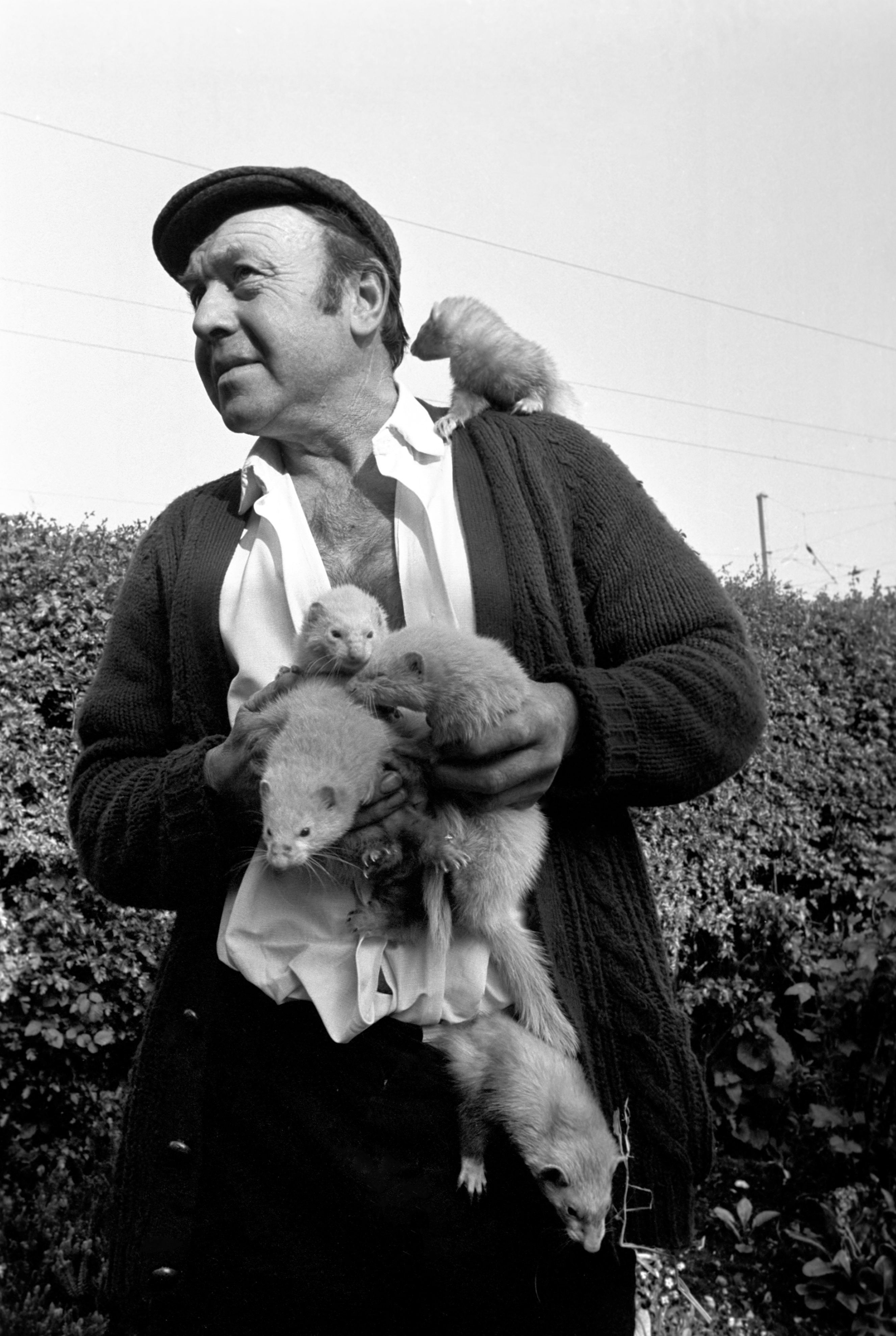Man's (new) best friend: Slinky, swift and sweet, a furry ferret is a worthy household companion
Ferrets are a perfect pet — just don't let them loose in the British Museum, Octavia Pollock writes.


What do Genghis Khan, scientists at the National Accelerator Laboratory, Illinois, US, and a small boy on the South Downs have in common? Lithe, inquisitive, quicksilver ferrets. That boy, James McConville, grew up to found the West Sussex Warreners, a thriving group of ferreters: ‘It’s three animals working together as a team, ferret, dog, human, to do a job. It’s magical.’
Ferrets have done that job for thousands of years, for the ruler of the Mongolian hordes on the warren-riddled steppes, in Egyptian ships and on the dusty hills of the Peloponnese (Greek references date to 450BC). Pliny the Elder writes of ferreting and the Romans may have brought the animals to British soil with their rabbits. Ferrets and ferreting were mentioned in court rolls in 1223 and as part of the Royal Household in 1281. Ladies are depicted ferreting in the Queen Mary Psalter of about 1340 and the 15th-century Sherborne Missal, a manuscript scribed by the monk John Whas and illuminated by one John Siferwas, has an exquisite image of longdogs chasing a hare, with mustelids ready to pounce. Such scenes were aristocratic: in 1390, a law decreed that ferrets could only be kept by those earning more than 40s a year, a substantial sum intended to put them beyond the reach of poachers. Elizabeth I herself is believed to have had ferrets; the ‘Ermine Portrait’ may show her with a ‘fitch’, an old word for the animal, rather than a stoat in ermine.
The exact origins of Mustela putorius furo cannot be pinpointed. Linnaeus gave credence to Ancient Greek historian Strabo and cited Africa, as does a Russian engraving of 1909 that names them Afrikanski horek, but they are accepted as domesticated polecats, Mustela putorius. The furo of the name comes from the Latin for thief, furonem, but the sneaky reputation, evoked in The Wind in the Willows, does these curious, diligent animals a disservice. The collective noun, a busyness, is far more apt. As James McKay, founder of the National Ferret School, says: ‘You’re ferreting things out right now, aren’t you?’

A group of people with their quarries after ferreting for rabbits in Cambridgeshire, circa 1910.
For all their uses, ferrets are fun — indeed, with falcons and fishing nets, they were banned in the 1443 Statutes of King’s College, Cambridge, for being too much of a distraction for scholars. They certainly brought amusement to Kirtlington Park in Oxfordshire, where Fidget, Panda and Pebble made Lucy Holland’s daughter Matilda laugh.
‘When she had friends over, they all shot straight upstairs to the bedroom,’ remembers Holland. ‘The bedroom was over the kitchen and I would hear screams: “He’s coming up the curtains!” ’ The ferrets were known to join the girls in the bath and would go under the rug as ‘carpet snakes’. ‘They were like clockwork toys, you’d wind them up and set them off as if they were on speed, then they’d sleep.’
Sculptor and ferret lover Nicola Hicks concurs: ‘They’re the cleverest, sweetest, most extraordinarily humorous animals you’ll ever meet. We had a rundown house in south London and they’d get under the floorboards. You’d be watching television and one would pop up and literally laugh at you.’ In the bath, ‘I’d put my hand under their belly and they’d float like a flying squirrel’.

Holland went ferreting with a local farmer as a child, but only tried it with her pets once: ‘We set up a bank by the stables with nets, but then I realised I only had a hammer and spade to kill the rabbits. Thankfully, all the rabbits were babies and escaped, or it might have been a bit traumatic for little blonde girls.’ Going out with the right equipment — a lurcher — meant Evie McCabe, now 25, was hooked from the age of three, selling rabbits she caught with her father in Chipping Norton market in Oxfordshire. She now has four jills, Dizzy, Rascal, Radish and Fig, and, until recently, a hoblet called Clyde. ‘They are funny little characters, super inquisitive, they wander around and cause havoc,’ she reveals. ‘They’ll use a mousetrap as a seesaw and they love stealing my cup of tea.’
Exquisite houses, the beauty of Nature, and how to get the most from your life, straight to your inbox.
Her ferrets live in a ferret court: ‘For my 21st birthday, my dad made me one, with tunnels, swings, hammocks, everything.’ Secure accommodation is vital: ‘They can squash their ribcage down to go through the tiniest hole,’ McCabe explains. Hicks concurs: hers would get out and into the neighbour’s house, then a building site. ‘They’d run along the top of walls and these large builders would be squealing thinking they were huge rats.’
'They got loose in the British Museum and she got a pretty stern slap on the wrist'
Florence Allen on her cousin's ferrets
Another who can attest to the slippery nature of ferrets is Florence Allen, Country Life's Social Media Editor. 'My cousin had two ferrets and she went through a phase of taking them everywhere with her,' she recalls. 'She decided to bring them down to London from Alnwick, Northumberland, but they got loose in the British Museum and she got a pretty stern slap on the wrist. It took the better part of the day to find them. She was told to never come back.'
Ferreting draws upon the ferret’s natural inclination to go down a hole, but not only after rabbits. At the Offutt Air Force Base, Nebraska, US, ferrets would run through the planes to wire them in the Second World War and, when Lt-Col Randy Blaisdell moved to US Space Command, he took his ferret Misty with him to do a similar job. At the Fermi National Accelerator Laboratory in Illinois, when experiments failed due to magnetic debris in the four-mile vacuum tube, Yorkshire engineer Robert Sheldon proposed using a ferret to pull a duster through and Felicia duly set to work with great success. No challenge is too much for them, as Hicks notes: ‘The place a ferret can’t get to is the one it’s obsessed with and watching them work out how to get there is magical.’
McKay has also drawn upon ferrets’ versatility, vital now the rabbit population has fallen dramatically in parts of the UK, probably due to the RHDV2 virus. He runs Acting Animals and his ferrets appeared in 2023’s Firebrand, with Jude Law as Henry VIII. ‘They need work, physically and mentally,’ he notes. ‘They want to find out what’s at the other end of a tunnel and we use that desire.’ McKay and his ferrets have found the location of a drain blockage and laid broadband cables, akin to the job performed by ferrets Beckham, Posh and Baby under the stage for the Millennium Concert in Greenwich Park, London.

McKay’s experience with a lack of rabbits in Derbyshire is echoed by McCabe in Oxfordshire and, in West Sussex, McConville is waiting to see if a relocation he did, from a farm with many rabbits to a farm with none, has worked: ‘We would always get double figures in the past, now we’re lucky to get five or six.’ He took his ferrets to school at Seaford College, running a Grand National Ferret Race, and to university in Bournemouth. ‘One escaped from his cage and was found in Boots on the high street.’
With the West Sussex Warreners, he does shows in summer and takes people ferreting in winter. ‘I want to get children involved and teach them the traditional methods of hunting,’ McConville says. He loves the winter days: ‘Going out with frost on the ground, it’s all quiet, then you hear the thump, thump of a rabbit underground. You put the ferret in and the rabbit bolts to the lurcher. There’s no gun, no disturbance, it’s very exciting.’
McKay feels the same: ‘You see wildlife so close. I know I will be quiet, not make a mess, not harm anything except the rabbit and, an hour later, all will be back to normal.’ Among many wildlife sightings, he remembers one that was unexpected: ‘The net literally went up in the air. I thought rabbits had learnt to fly, but it was a little owl. It bit me as I freed it!’
Ferrets, contrary to popular opinion, seldom bite if well handled. McKay’s first encounter was as a little boy with a gamekeeper. ‘Dad was talking to him and I put my hand into the box of ferrets and took one out. Dad was furious! The keeper, a man of few words, opened the ferret’s mouth and put my finger in. Dad was apoplectic, but the keeper said “a good ferret never bites”.’ A ferret is not used to kill rabbits, but to bolt them to a lurcher or hawk, although if hungry they may kill underground and tuck in, at which point a tracking collar can help find where to dig.
In one ancient game, biting is understandable. Ferret legging involves securing the bottom of a competitor’s trousers and placing the ferret inside, the winner being the one who lasts longest before, presumably, ripping their trousers off and running away screaming. The record, set in 1981 by Yorkshire miner Reg Mellor, is five hours, 26 minutes. It’s unlikely that time was challenged at Aysgarth School, North Yorkshire, where head of maths Tim Bullas, affectionately known as Lord Bullas, founded a ferret club 18 years ago (now sadly closed). One wet Saturday, denied their usual walk, the boys tried ferret legging. ‘Health and safety would never permit it today,’ he admits, ‘but there was lots of laughter and squeals.’
At Milton Abbey in Dorset, ferret-club alumnus Ed Pope, founder of Watatunga Wildlife Reserve in Norfolk, recalls another habit lost to the past: ‘We would sneak out at night and poach fish from the lake to feed our ferrets. The keeper turned a blind eye!’
One year, when one of Lord Bullas’s jills produced a large litter, he presented each Form 5B leaver with their own ferret. ‘The boys were delighted, the parents perhaps less so.’ Hicks, who would bury her nose in her ferrets’ fur in defiance of those who say they smell, would have been delighted: ‘Look in a ferret’s eyes and you’ll never forget it.’ Busy, amusing and eager to work, a ferret is a companion for the ages.
Octavia, Country Life's Chief Sub Editor, began her career aged six when she corrected the grammar on a fish-and-chip sign at a country fair. With a degree in History of Art and English from St Andrews University, she ventured to London with trepidation, but swiftly found her spiritual home at Country Life. She ran away to San Francisco in California in 2013, but returned in 2018 and has settled in West Sussex with her miniature poodle Tiffin. Octavia also writes for The Field and Horse & Hound and is never happier than on a horse behind hounds.
